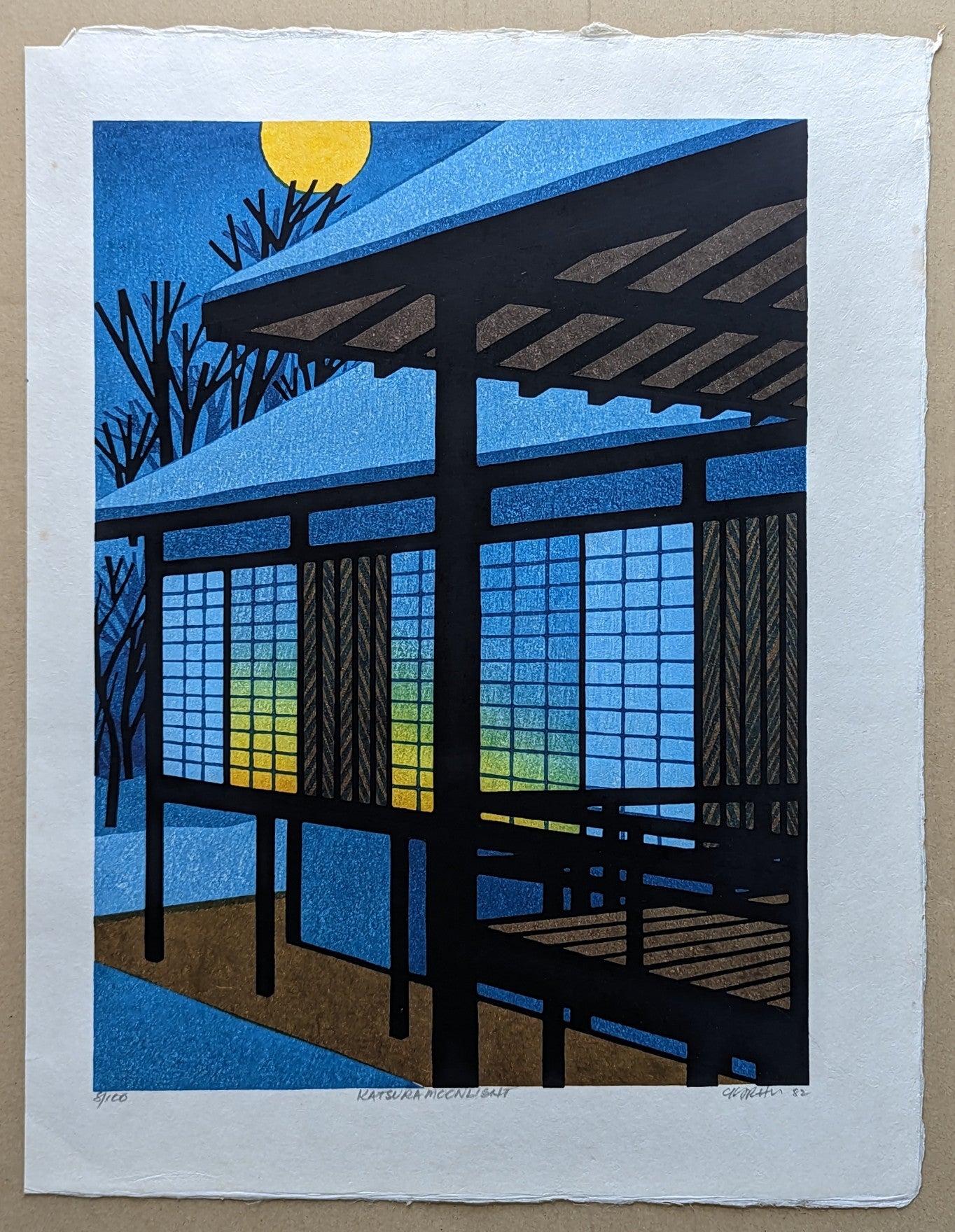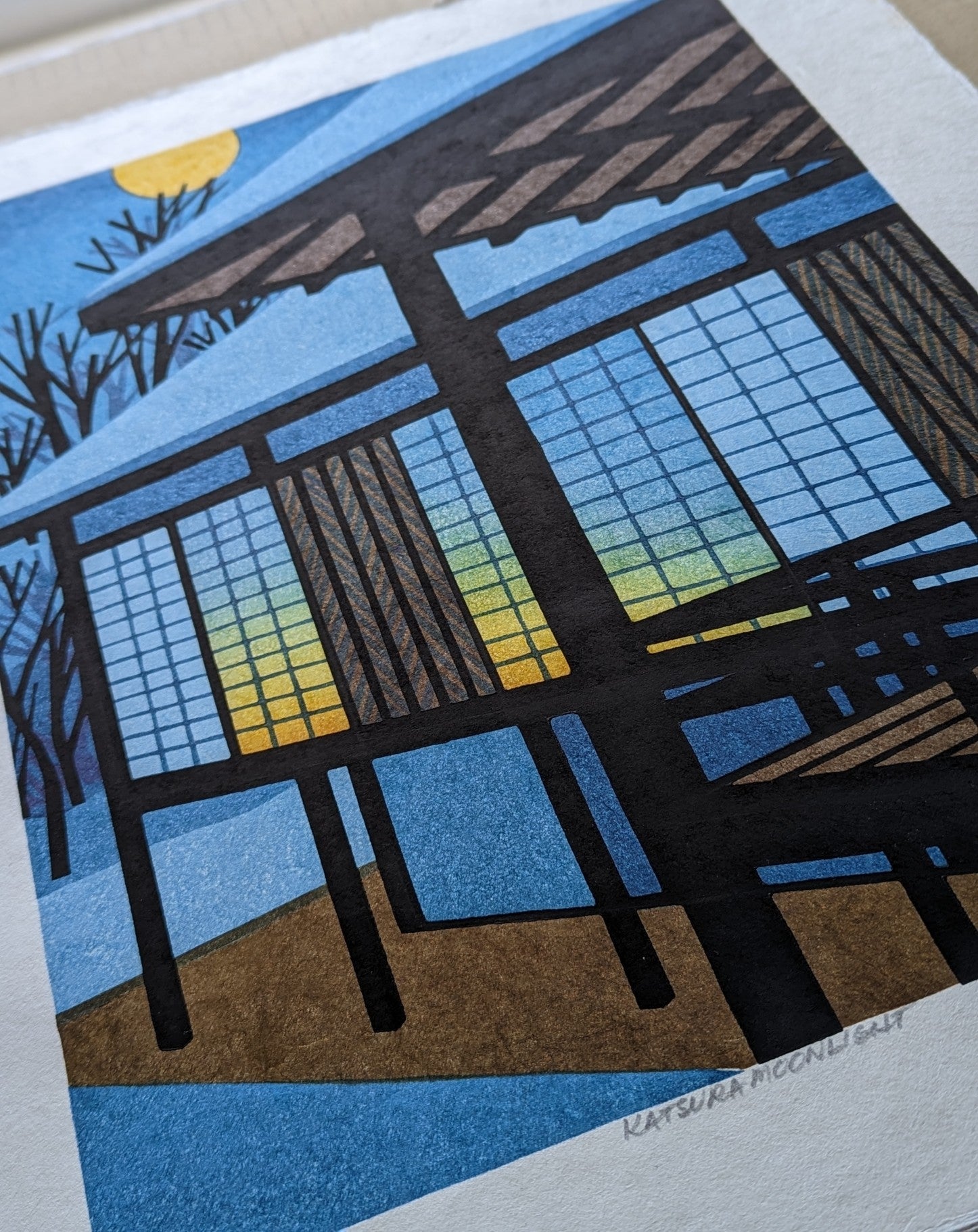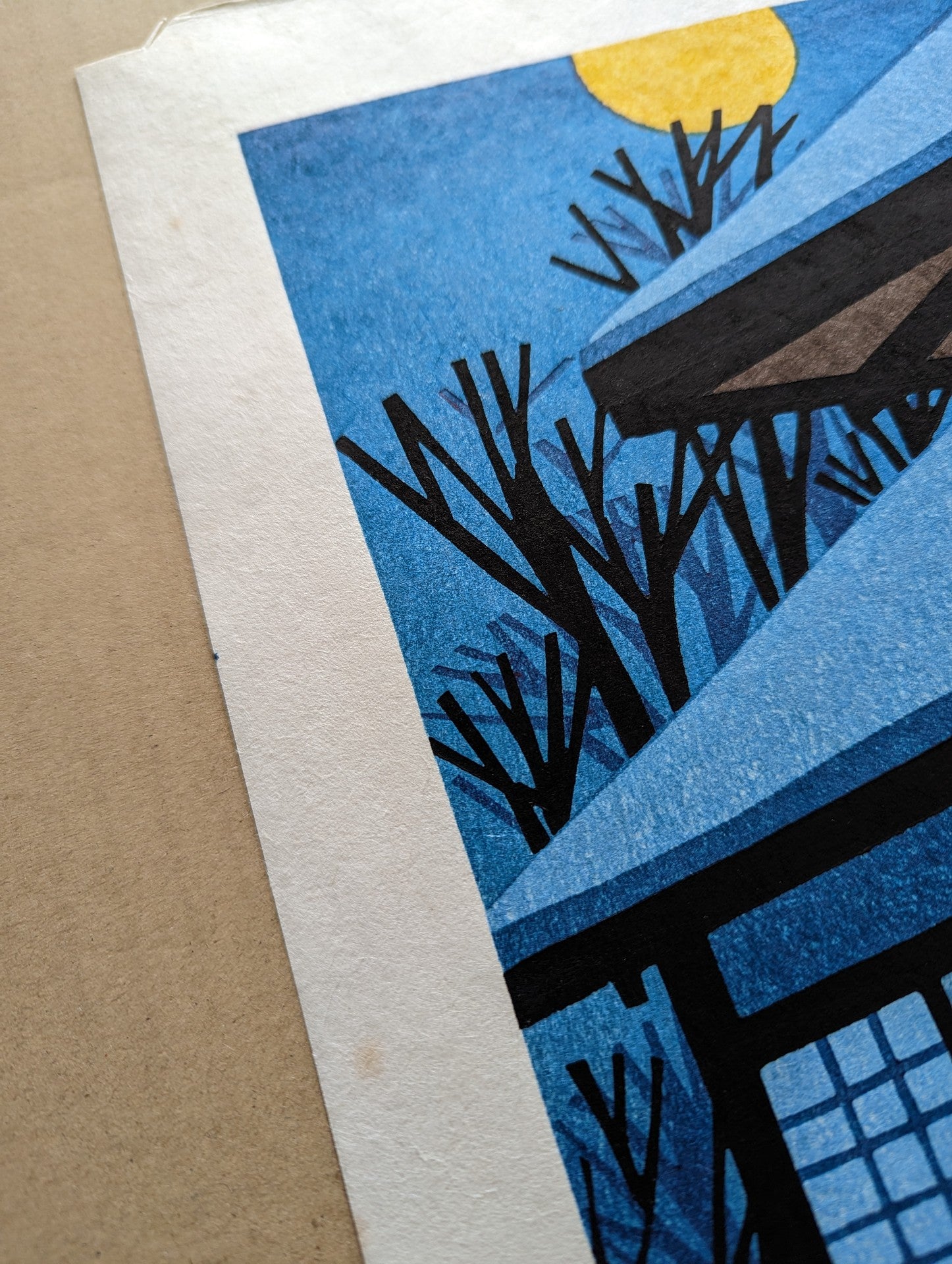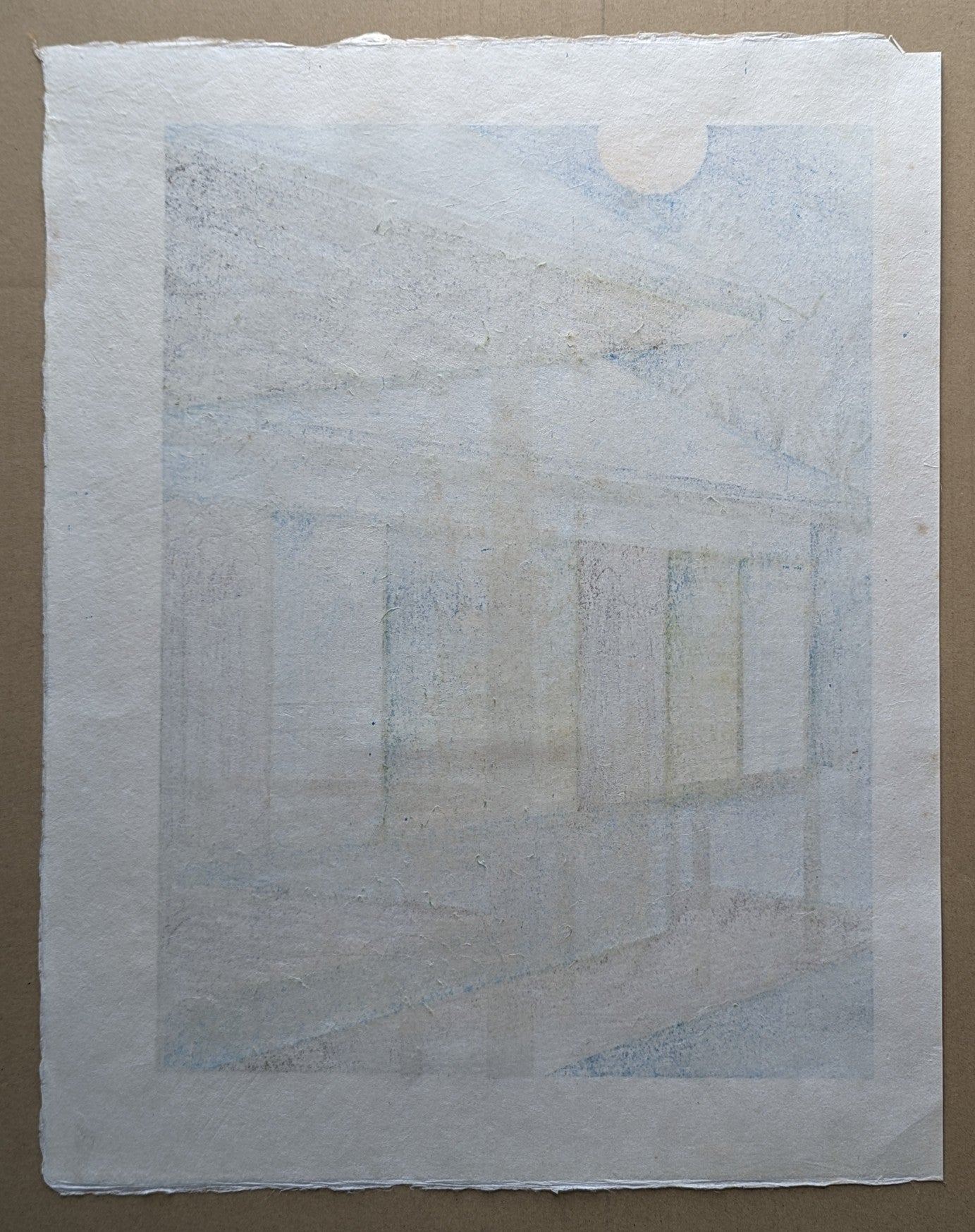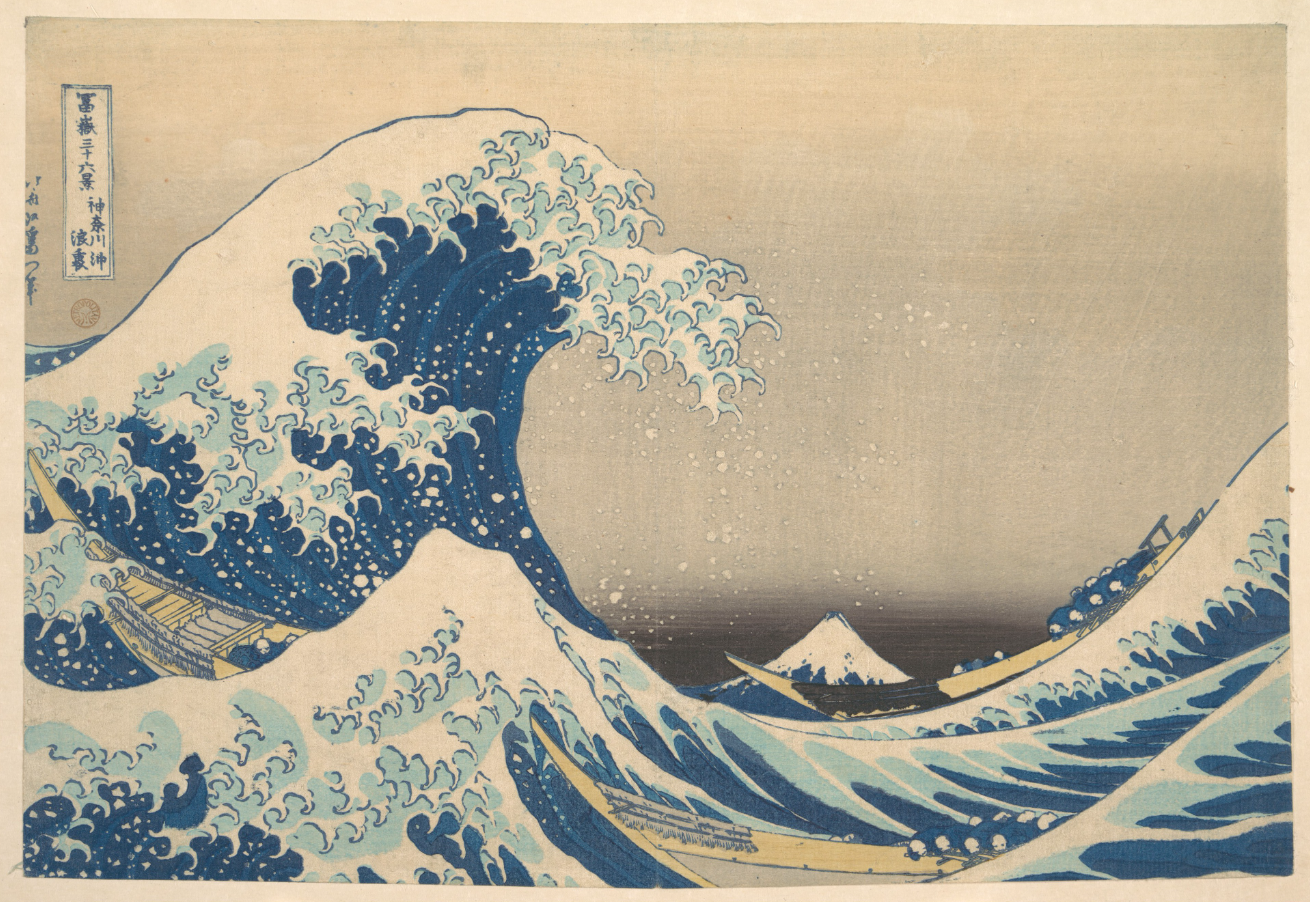Clifton Karhu’s 1982 woodblock offers a serene, moonlit vista of the Katsura Imperial Palace’s famed Tsukimidai (月見台) moon-viewing veranda at the Koshoin (古書院), gazing through the aligned Shoin drawing rooms toward the illuminated Chu-Shoin (中書院) and Shin-Goten (新御殿). ☾🏯
- Year & Edition: 1982 · Ed. of 100 (8/100) (titled, editioned & signed in pencil to plate).
- Medium: Woodblock.
- Dimensions: Sheet approx. H: 48.00 cm × W: 37.75 cm; Image H: 40.00 cm × W: 30.00 cm.
- Condition: Near-archival; pristine and unmarked, with vibrant colour, clean paper and only two faint browning spots at the left margin.
- Notes: Karhu’s Katsura series celebrates Kyoto’s crown-jewel of architecture, the 17th-century Katsura Imperial Palace (桂離宮) - a retreat designed by Prince Hachijō Toshihito (1579–1629) for formal moon-viewing and entertainment. Across his late 1970s - early 1980s prints, Karhu explored the palace’s decorative gardens, ponds, stone lanterns, bridges and tea houses in every season and weather. His quintessential composition, captured here in Katsura Moonlight, frames the palace’s three aligned shoin rooms from the Koshoin’s veranda under a winter moon.
This iconic print was chosen to illustrate the cover of Mary & Norman Tolman’s 1982 volume People Who Make Japanese Prints: A Personal Glimpse, making an original “Katsura Moonlight” alongside a limited-edition copy of the book a coveted centrepiece for any Karhu collection.


